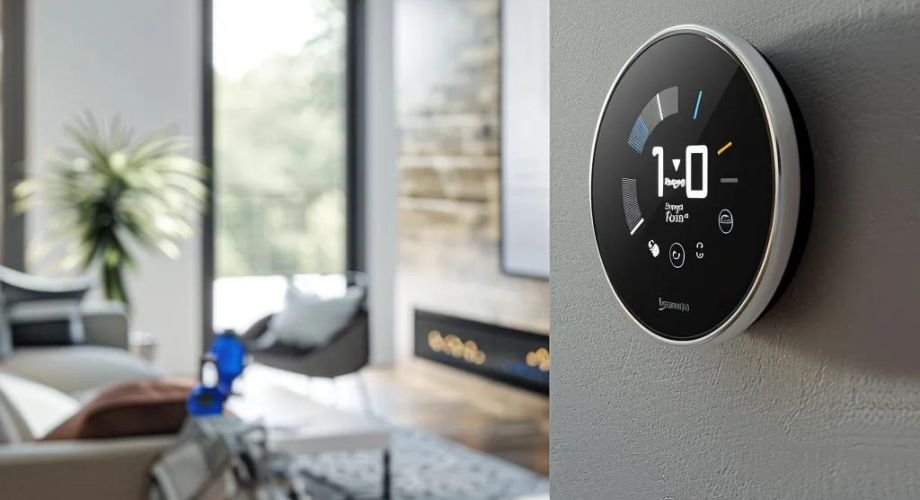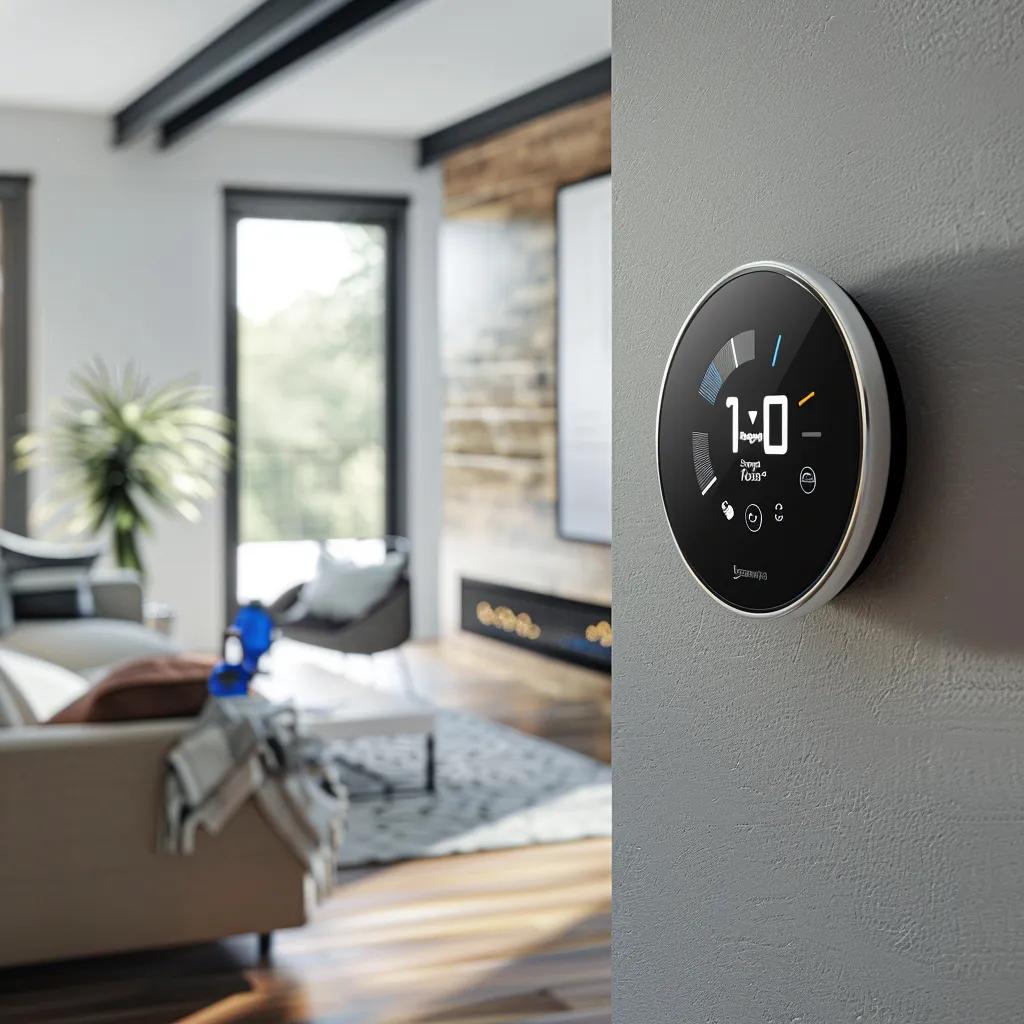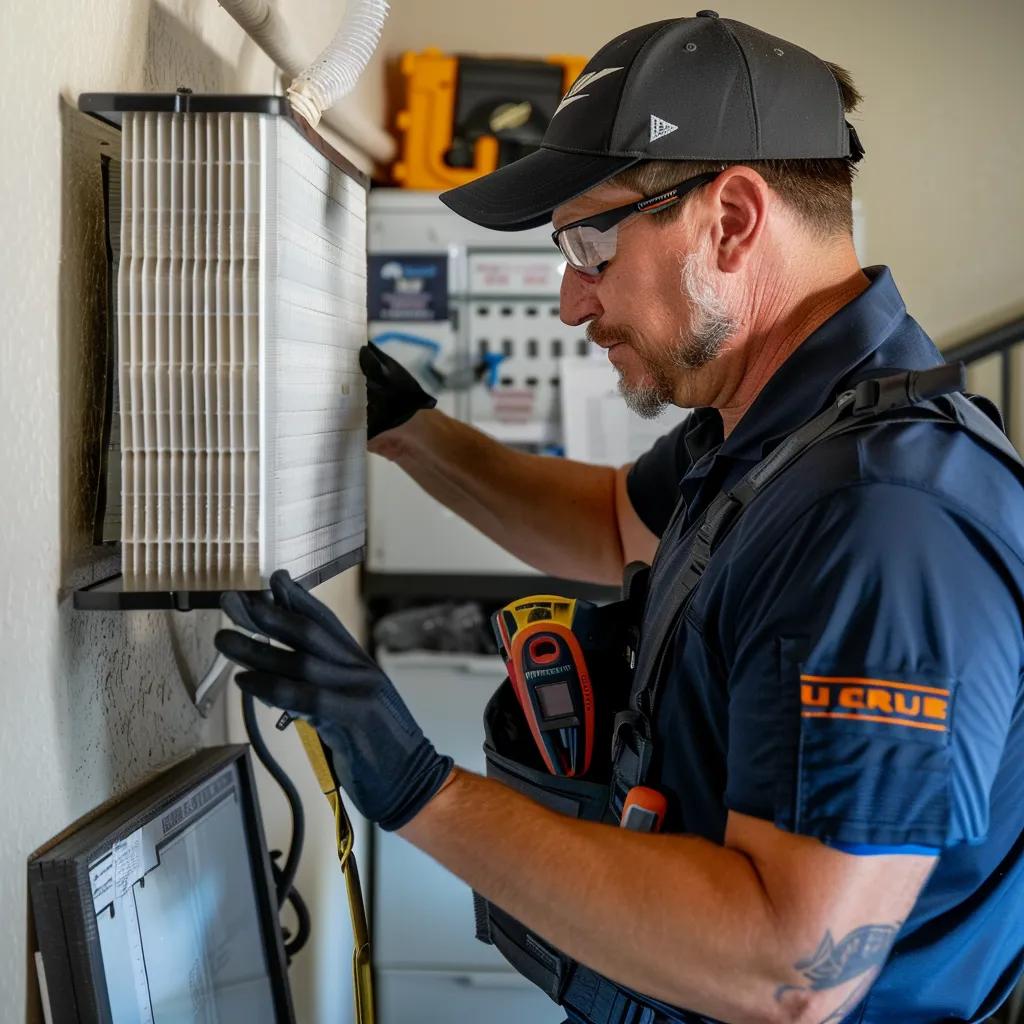
Discover My Smart Thermostat Tips for Seasons in Tampa Homes

Article:
Smart Thermostat Seasonal Settings for Tampa Homeowners: Optimize Comfort and Energy Savings

Tampa homeowners can cut energy bills and improve year-round comfort by fine-tuning smart thermostat seasonal settings to match the area’s humid subtropical climate. This guide explains why seasonal adjustments matter, outlines the best summer and winter temperature recommendations, explores advanced humidity control strategies, and shows how smart thermostats integrate with home systems. You’ll also learn when to call professionals for installation and maintenance, ensuring your HVAC system runs efficiently and lasts longer.
Why Are Seasonal Thermostat Adjustments Essential for Tampa Homes?
Seasonal thermostat adjustments involve setting different target temperatures for summer and winter to balance comfort, energy efficiency, and equipment health. In Tampa, hot summers and mild winters create distinct HVAC demands that require tailored settings. For example, raising the cooling setpoint by a few degrees during the hottest months can trim monthly bills without sacrificing comfort. Seasonal optimization not only lowers utility costs but also prevents moisture-related issues and extends system lifespan.
How Does Tampa Bay’s Humid Subtropical Climate Affect Thermostat Settings?
Tampa Bay’s climate features hot, muggy summers and mild, damp winters, which place heavy load on air conditioners and heaters. High humidity in summer increases perceived temperature, causing longer cooling cycles, while occasional winter moisture can promote mold without proper heating. Understanding these patterns helps homeowners choose settings that reduce runtime and control humidity effectively.
What Are the Benefits of Adjusting Thermostat Settings Seasonally?
Adjusting seasonal settings delivers four key advantages:
- Enhanced Energy Efficiency: Lower cooling demand in summer and moderated heating in winter translate to up to 20 percent savings on utility bills.
- Improved Home Comfort: Consistent indoor temperatures with minimal humidity fluctuations maintain occupant well-being.
- Mold and Mildew Prevention: Regulating temperature and humidity helps keep indoor moisture between 30 and 50 percent, reducing fungal growth.
- HVAC System Longevity: Balanced runtime and reduced wear guard against premature component failure.
These benefits work together to maximize homeowner satisfaction and protect HVAC investment.
Energy Savings with Smart Thermostats
Studies show that smart thermostats can lead to significant energy savings by optimizing temperature settings based on occupancy and usage patterns. These savings can be as high as 20% on heating and cooling costs, depending on the user’s habits and the specific features of the thermostat.
This research supports the article’s claims about the potential for energy savings through the use of smart thermostats.
How Do Seasonal Settings Extend HVAC System Lifespan in Tampa?
Seasonal settings reduce continuous cycling by aligning thermostat targets with outdoor conditions. Shifting cooling setpoints higher during peak heat limits compressor runtime, while lowering heat targets in winter eases furnace strain. Balanced operation minimizes mechanical stress and extends equipment life, ensuring reliable performance through Tampa’s climate extremes.
What Are the Best Summer Smart Thermostat Settings for Tampa Homeowners?
Summer smart thermostat settings aim to balance energy savings and relief from high heat indices. By adopting a few simple recommendations, homeowners can reduce AC runtime without compromising comfort during humid Tampa summers.
These settings optimize cooling load and support peak-hour energy reduction.
What Daytime and Nighttime Temperatures Save Energy and Maintain Comfort?
Daytime setpoints around 78 °F align with Department of Energy recommendations, balancing energy efficiency and indoor comfort. At night or when away, lowering to 74 – 76 °F maintains a pleasant environment for sleep without excessive runtime. This simple two-step schedule cuts cooling costs while keeping humidity under control.
How Can Smart Thermostats Help Control Humidity During Tampa Summers?

Smart thermostats with built-in humidity sensors and dehumidification controls maintain indoor moisture levels between 30 and 50 percent. Features like “auto” fan mode run the fan intermittently to remove latent humidity, and seamless integration with whole-home dehumidifiers keeps air drier. Precise humidity management prevents clamminess and inhibits mold growth.
Humidity Control and Mold Prevention
Maintaining indoor humidity levels between 30% and 50% is crucial for preventing mold growth and ensuring a healthy indoor environment. Smart thermostats with humidity sensors and controls can help regulate these levels, reducing the risk of mold and mildew, especially in humid climates.
This citation supports the article’s recommendations for maintaining humidity levels to prevent mold growth.
What Are Practical Tips to Reduce Energy Bills with Summer Thermostat Settings?
Implement these actionable strategies:
- Enable Smart Scheduling: Use learning algorithms to adjust setpoints based on occupancy patterns.
- Use Geofencing: Automatically raise temperature when you leave home and restore it before return.
- Optimize Fan Operation: Set the fan to “Auto” to remove moisture efficiently.
- Block Direct Sunlight: Close blinds during peak sun hours to reduce solar heat gain.
What Are the Recommended Winter Smart Thermostat Settings for Tampa Homes?
Winter settings focus on mild heating needs, ensuring comfort without driving up heating costs or encouraging mold in cooler, humid months.
These guidelines meet homeowner comfort demands while reducing heating bills.
What Temperatures Optimize Heating Comfort and Energy Savings in Tampa Winters?
Maintaining a daytime setpoint around 68 °F ensures a cozy indoor environment without overworking the furnace. Lowering by 4 – 6 °F at night or when away achieves energy reduction and brings humidity into a healthy range, preventing discomfort and moisture buildup.
How Can Proper Thermostat Settings Prevent Mold Growth in Cooler Months?
Setting night and unoccupied temperatures low enough to remove excess moisture discourages mold formation on cold surfaces. Consistent circulation through moderate temperature setbacks helps keep indoor relative humidity between 30 and 50 percent, inhibiting fungal spores.
What HVAC Maintenance Should Tampa Homeowners Perform Before Winter?

Prior to cooler weather, perform these maintenance tasks:
- Replace Air Filters: Install new filters to ensure efficient airflow.
- Inspect Ductwork: Seal leaks to prevent heat loss.
- Calibrate Thermostat: Verify accuracy for optimal seasonal control.
How Do Smart Thermostats Enhance Home Comfort and Energy Efficiency in Tampa?
Smart thermostats offer advanced features that promote both homeowner comfort and operational savings through automation and data-driven control.
What Features of Smart Thermostats Support Remote Control and Learning?
Key features include:
- Wi-Fi Connectivity: Adjust settings via smartphone from anywhere.
- Learning Algorithms: Adapt temperature schedules based on habits.
- Energy Reports: Provide insights on usage patterns and savings.
How Do Smart Thermostats Integrate with Tampa Home Smart Systems?
Smart thermostats connect seamlessly with home ecosystems through platforms like Alexa and Google Assistant. Integration enables voice control, triggers for smart lighting or window shades, and synchronized scenes that adjust multiple devices for optimal comfort and efficiency.
Which Smart Thermostat Brands Are Best Suited for Tampa’s Climate?
When Should Tampa Homeowners Consider Professional Smart Thermostat Installation and Maintenance?
Professional installation ensures safe wiring, optimal sensor placement, and correct system integration—critical for multi-stage HVAC systems or homes with unusual wiring configurations. Certified technicians also verify compatibility with existing equipment and program advanced features properly.
What Is the Typical Cost of Smart Thermostat Installation in Tampa?
Installation costs range from $150 to $300, depending on system complexity and equipment. Pricing includes device setup, wiring upgrade if necessary, and on-site calibration to match seasonal settings recommendations.
How Can Homeowners Troubleshoot Common Smart Thermostat Issues?
Homeowners can resolve basic issues by:
- Checking Wi-Fi Signal: Ensure the thermostat is within router range.
- Replacing Batteries: Swap out batteries in battery-powered models.
- Rebooting the Device: Power-cycle to clear temporary errors.
When deeper calibration or wiring concerns arise, professional service is recommended.
Why Choose CallHomeTherapist.com for Smart Thermostat Services in Tampa Bay?
CallHomeTherapist.com delivers local expertise from certified technicians who understand Tampa’s unique climate challenges. Our full-service approach includes precision installation, seasonal programming, and ongoing maintenance to maximize energy savings, enhance comfort, and prevent mold growth—backed by prompt response and customer satisfaction guarantees.
Adopting tailored seasonal settings empowers Tampa homeowners to optimize comfort, reduce energy bills, and safeguard their HVAC investment. For expert installation and maintenance, schedule your smart thermostat service today and enjoy intelligent climate control year-round.




